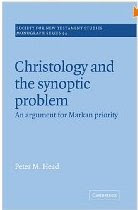There is a long-standing tradition in Textual Tradition to explain variant readings by 'what we think the scribe did or thought'. But how realistic are such explanations? This essay argues that any explanation should start with the mechanics of normal copying, and with a proper understanding of what mental processes are involved. A proper model of copying is suggested.
Showing posts with label Dirk Jongkind. Show all posts
Showing posts with label Dirk Jongkind. Show all posts
"Singular Readings in Sinaiticus: The Possible, the Impossible, and the Nature of Copying,".
There is a long-standing tradition in Textual Tradition to explain variant readings by 'what we think the scribe did or thought'. But how realistic are such explanations? This essay argues that any explanation should start with the mechanics of normal copying, and with a proper understanding of what mental processes are involved. A proper model of copying is suggested.
Scribal Habits in Codex Sinaiticus,.
The result of Jongkind's doctoral work, covering a variety of scribal phenomena found in the oldest complete Greek New Testament in existence (it also includes a large part of the Greek Old Testament). Particular attention is given to noticeable differences between the two scribes who worked on the New Testament text, but also issues such as the use of nomina sacra and the Eusebian canon system are covered.
"`The Lilies of the Field` Reconsidered: Codex Sinaiticus and the Gospel of Thomas," .
Years ago it was noted that the original reading of Codex Sinaiticus in Mat 6:28 (erased and rewritten by a corrector) reflects the Greek Gospel of Thomas (the particular reading is absent from the Coptic translation of Thomas). Some have suggested that both Sinaiticus and Thomas go back to the source that underlies all the other manuscripts. However, it may be that Sinaiticus here, as also in a number of other places, reflects non-biblical literature and is dependant on Thomas rather than on a shared source.
"One Codex, Three Scribes, and Many Books: Struggles with Space in Codex Sinaiticus,".
If more than one scribe are working simultaneously on different part of the same manuscripts, how do they fit the pieces together? In Sinaiticus the scribes calculated how much space each scribe would need, so that the next part could be started. This calculation went sometimes wrong with the result that the scribes had to do all sorts of things to cover up their error.
"Corinth in the First Century AD: The Search for Another Class".
The Roman world is sometimes portrayed as being constituted of a small and extremely rich elite and a large mass of poor people. In this article Jongkind takes a look at the archaeological evidence of excavated houses and shows that a wide range of housing was available: not all houses were inhabited by the very poor or very rich - there was truly a large group of people in between.
Subscribe to:
Posts (Atom)












